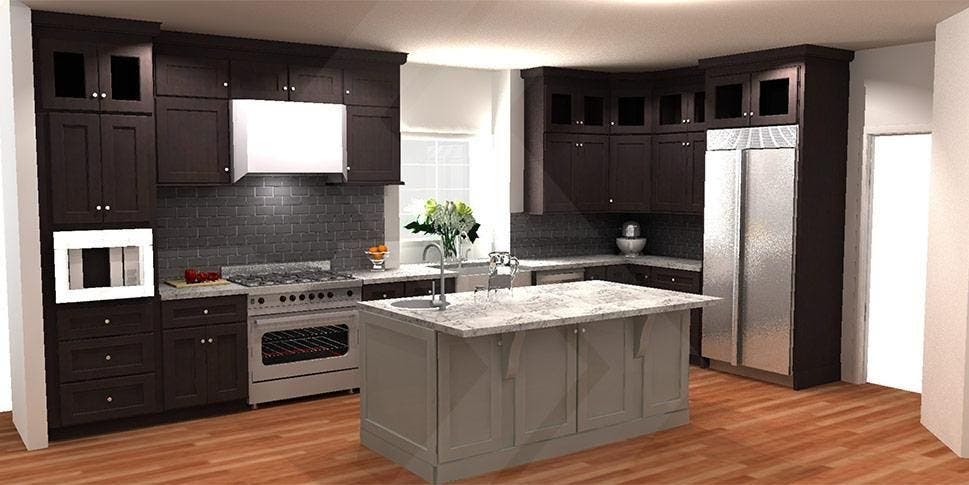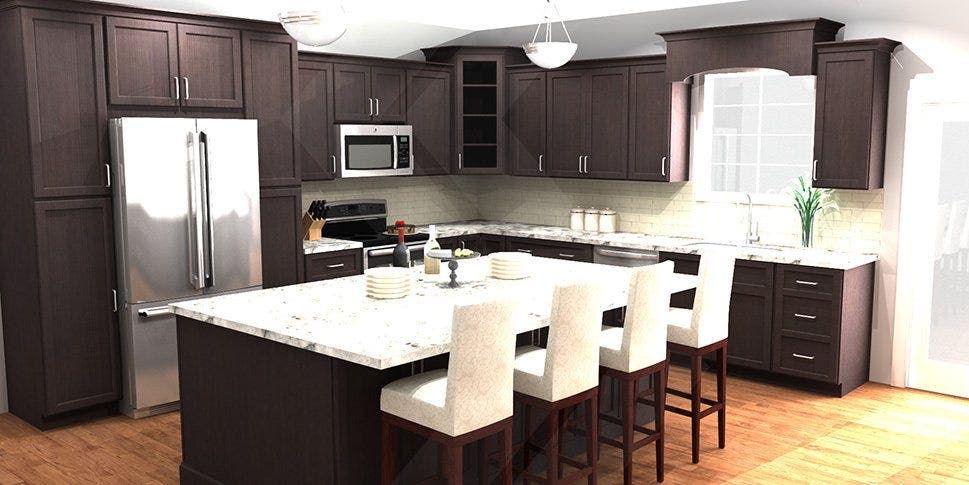Our Contacts
Phone
Fax
General Inquiries
Design Help
Shipping Information
Warranty, Claims, and Returns
Customer Service Hours
Mon - Thurs: 8am - 6pm ET
Fri: 8am - 5pm ET
Sat & Sun: Closed
Closed National Holidays
Updated on: August 01, 2022


Kitchen islands are becoming a staple feature in American homes. They are both functional and a focal point in the kitchen. An island is also an essential item in the very popular "open plan" style kitchen that is popping up in homes everywhere. In those spaces, islands are the main counter space, needing to function as a prep area, informal dining space, and place for everyone to gather.
Kitchen islands can perform a variety of functions. They can be a place for kitchen clean-up, housing your dishwasher and sink, as well as pull-out trash bins. For food prep, make sure there are outlets placed along the island, as well as a garbage bin and sink (a small prep sink would work if this isn't your main counter). You can also do your cooking at the kitchen island by building in a stovetop.
There are a few things to remember when adding a cook top:


Determining the function of your kitchen island dictates the size it should be. Using it as the main prep counter or clean-up station takes up more space than if you were just using it for informal dining. If your kitchen is smaller than 8\' x 12\', unfortunately an island may not fit in your space. The minimum size of an island should be 2 feet deep and 4 feet long. If you plan on having your island accommodate a sink, dishwasher, and cook top, plan on a minimum of 7 feet in length and 3 feet in depth. As far as space for walking around the island and working at the island, you need 3 feet at the ends. For space on the "working side", you need a minimum of 42" of space to move around, cook, and get around. When planning a kitchen island, you also have to decide on the height. You can have dual heights - one for prep and cooking and one height for eating. If this is your option, then your "working" counter would be 36" in height and your other counter would be 48". This would allow for a bar height stool to be used. If you want one height, then you would stick with the 36" height and use counter stools around. Make sure you have at least 15" of counter overhang for guests to sit comfortably.
Adding appliances and sinks to the island take extra planning, having to allow for electricity and plumbing. This detail has to be planned at the very beginning stages; it can't come later in the process. Also, plan for your storage needs in the island. You can have storage on the "working" side for pots, pans, silverware, and cooking utensils. Then, on the "public" side, you can store cookbooks, platters, and items you want to display. Just make sure not to put breakables where someone can accidentally kick them while sitting.